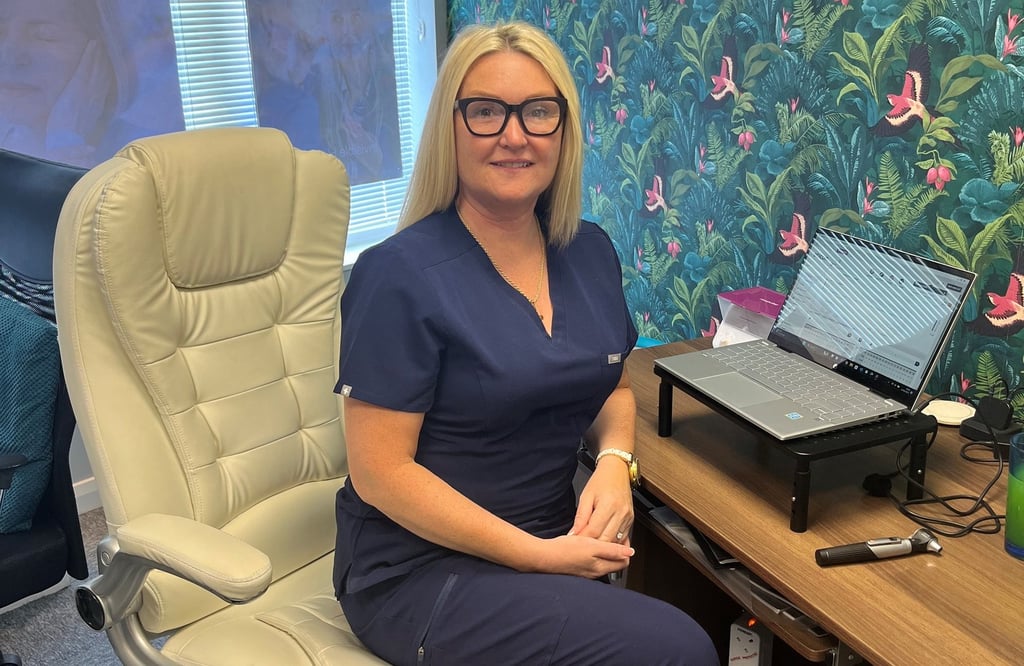heswall clinic: closed 24 dec & reopens 5 jan; chester clinic: closed 24 dec-26 dec; open 29th; closed 30 dec & reopens 5 jan

6 Steps for a Hearing Test
If you've booked a hearing test — or you're considering it — you might be wondering what actually happens during the appointment. For many people, especially those experiencing symptoms for the first time, it can feel a little daunting. But rest assured: a hearing test is simple, non-invasive, and often the first step toward improving your hearing health and overall quality of life.
HEARING TEST
6/18/20252 min read


If you've booked a hearing test — or you're considering it — you might be wondering what actually happens during the appointment. For many people, especially those experiencing symptoms for the first time, it can feel a little daunting. But rest assured: a hearing test is simple, non-invasive, and often the first step toward improving your hearing health and overall quality of life.
At [Your Clinic Name], we want you to feel completely comfortable. Here's what you can expect at your hearing assessment:
1. Initial Conversation & Medical History
Your audiologist will begin by getting to know you. They’ll ask about:
Any hearing difficulties you’ve noticed
Whether you experience ringing (tinnitus), dizziness, or ear pain
Your lifestyle and communication needs
Relevant medical history or medication use
This chat helps tailor the assessment to your individual needs.
2. Ear Examination (Otoscopy)
Next, the audiologist will look inside your ears using a small instrument called an otoscope. This checks for:
Excessive earwax
Signs of infection or damage
Any physical abnormalities that may affect hearing
3. Hearing Test (Pure Tone Audiometry)
This is the core of the assessment. You’ll wear headphones or ear inserts and listen for a series of beeps or tones at different pitches and volumes. Your job is simple: press a button each time you hear a sound, even if it’s very faint.
The goal? To find the quietest sounds you can hear at different frequencies, creating an audiogram — a visual map of your hearing ability.
4. Speech Testing (Optional)
Sometimes, speech tests are used to understand how well you hear and process words in quiet or noisy environments. This helps gauge real-world hearing challenges.
5. Results & Discussion
Your audiologist will explain your results clearly:
Are your hearing levels within normal range?
Is there mild, moderate, or more significant hearing loss?
Which frequencies are affected?
What’s the likely cause?
They'll discuss next steps — whether that’s no action, monitoring, earwax removal, referral to ENT, or recommending hearing aids or other support.
6. Personalised Advice
You’ll also receive professional advice tailored to your lifestyle, including:
Communication tips
Hearing protection advice
Support for tinnitus or balance issues
Hearing aid options (if relevant)
How Long Does It Take?
A standard hearing test usually takes 30–60 minutes. It’s quick, painless, and could make a huge difference to your daily life.
Final Thoughts
A hearing test is the first step in understanding your hearing health. Whether you’re noticing signs of hearing loss or simply want peace of mind, getting tested is a positive, proactive choice.
At Hear Pure, our friendly team is here to support you every step of the way — with personalised care, clear explanations, and no pressure.
Hearing Clinic in Chester & Wirral
Top-notch hearing care services to our local communities in Cheshire and Wirral
Contact Us
© 2025. All rights reserved.
1a Hoole Road, Chester, CH2 3NQ
1 Milner Road, Heswall, Wirral, CH60 5RT
About
Useful Links
